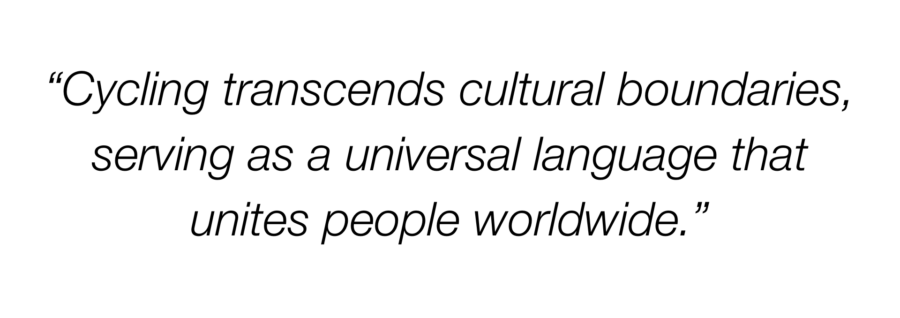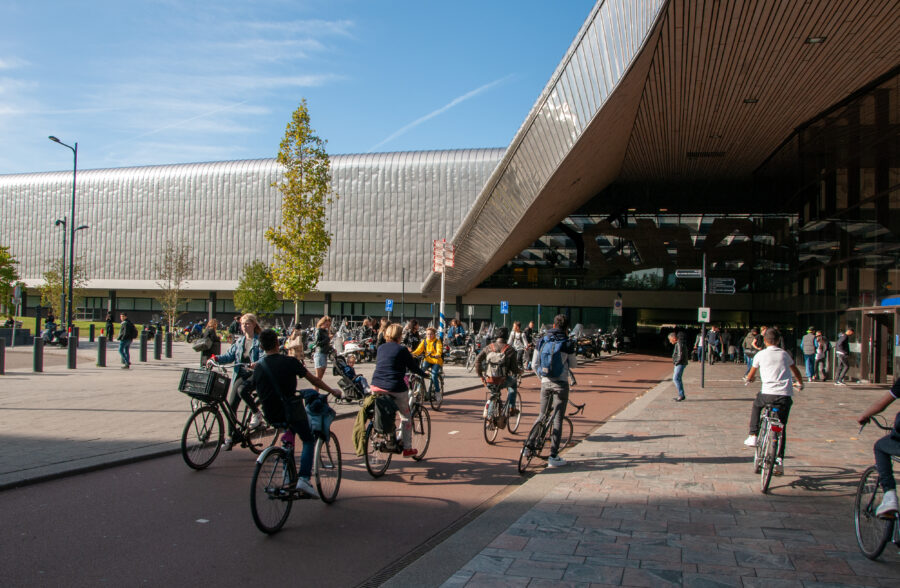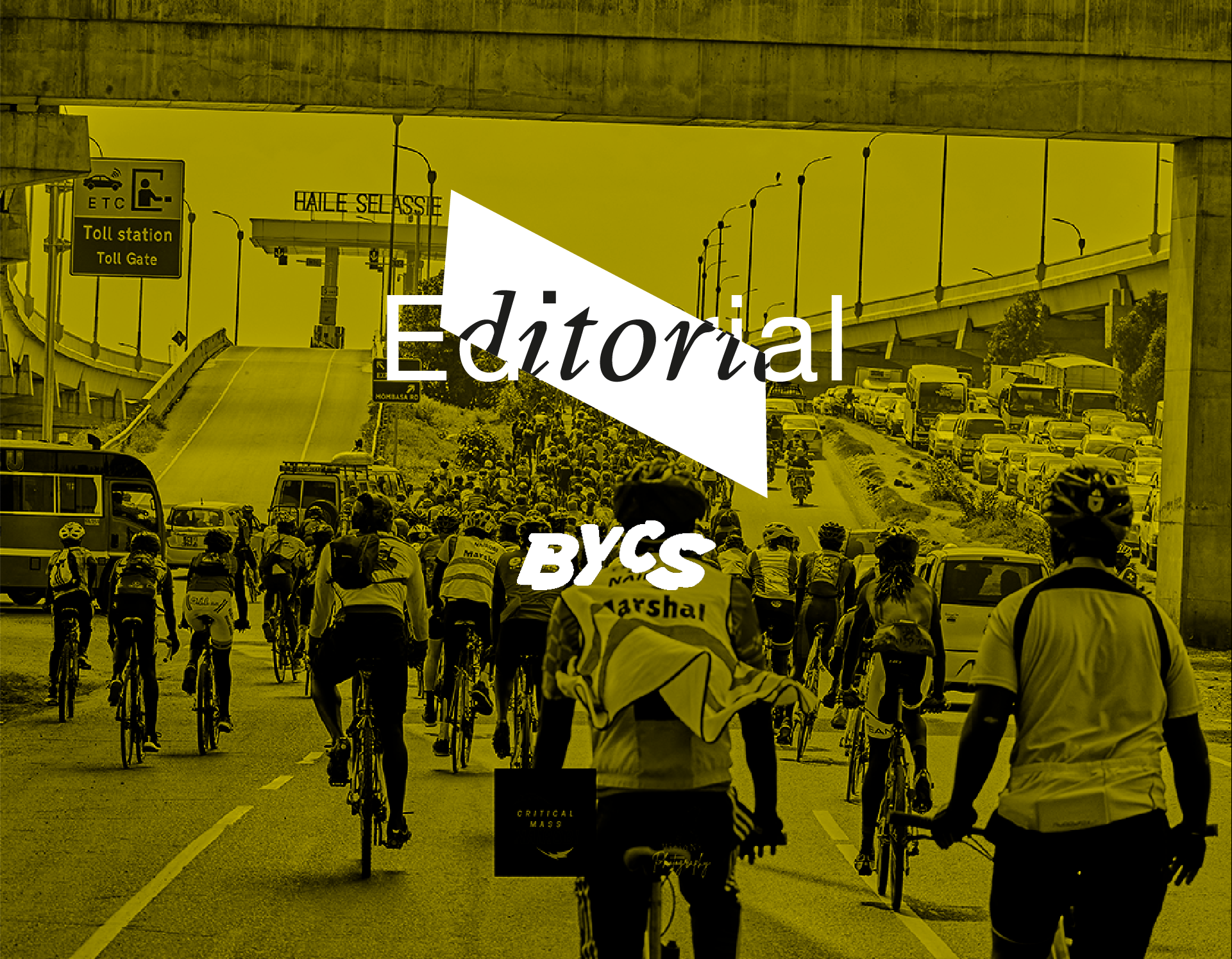Mona Khatib, Communications and Marketing Manager at BYCS, aims to bridge communities through strategic campaigns that highlight cycling’s transformative power. Her work highlights global connectivity and empowers individuals to advocate for sustainable urban mobility.
__
We often say that we believe the 200-year-old bicycle is one of the simplest solutions to some of the world’s most complex urban challenges. This sentiment highlights our belief in cycling, not just as a mode of transport, but as a driver for social, environmental, and economic change within cities. However, others argue that integrating cycling into densely populated urban areas is far from simple. Critics point out that promoting cycling initiatives can be costly and logistically challenging in cities where space is at a premium and resources are already stretched thin. They raise concerns about the feasibility of accommodating cyclists safely alongside heavy vehicular traffic, particularly in bustling metropolitan centers.
Despite these challenges, the benefits of cycling are increasingly recognised worldwide. Whether it’s through initiatives to build bike-friendly neighbourhoods, promote active transportation policies, or foster a cycling culture that transcends age, gender, and socio-economic status, cities are finding more and more innovative ways to harness the potential of bicycles to address modern urban challenges.
In places like Ghent, where cycling has become ingrained in the daily lives of students, professionals, and families, or in Nairobi, where grassroots efforts like bike trains unite diverse communities, bicycles are not just tools for transportation—they are symbols of inclusivity and community-building.
Connecting through cycling is about recognising the ways in which cycling can bring people together and create stronger communities within urban environments. Connecting through cycling means recognising the bicycle as more than just as a means of getting from point A to point B. In this edition of Perspectives, I explored this theme by interviewing three prominent voices in urban mobility. Each of these conversations opened my eyes to the many ways we connect through cycling, such as using the bicycle as a tool for social interaction, community building, and connectivity on multiple levels. The interviews revealed that in cities like Ghent, where cycling has become ingrained in the daily lives of students, professionals, and families, and in Nairobi, where grassroots efforts like bike-trains unite diverse communities, bicycles are not just tools for transportation—they are symbols of inclusivity and community-building. Let’s briefly explore how connecting through cycling demonstrates that bicycles serve as more than just a means of transportation:

Physical Connectivity: Exploring Cities at Human Pace
Cycling allows individuals to intimately connect with their surroundings in ways other modes of transport cannot match. At a human pace, cyclists navigate neighborhoods, uncovering hidden gems and growing a deeper understanding of their urban environment. Unlike cars or public transport, bikes offer the freedom to explore alternative routes, revealing the soul of a city block by block.
Social Connectivity: Building Bonds Across Boundaries
Beyond its physical benefits, cycling fosters social cohesion by bringing together people from diverse backgrounds. Group rides, cycling clubs, and community events become hubs of interaction where shared passion for biking bridges social divides. These gatherings not only strengthen personal connections but also enrich the fabric of neighborhoods by encouraging collaboration and mutual support.
Environmental Connectivity: Sustainable Urban Living
Embracing cycling as a primary mode of transportation promotes environmental sustainability. By reducing air and noise pollution, alleviating traffic congestion, and encouraging healthier lifestyles, cities can forge a more harmonious relationship between their residents and the natural world. This eco-conscious approach not only improves quality of life but also ensures a sustainable future for urban communities.
Cultural Connectivity: Pedalling Towards Understanding
Cycling transcends cultural boundaries, serving as a universal language that unites people worldwide. In cities across the globe, cycling is woven into the daily fabric of life, reflecting diverse traditions and identities. Embracing cycling as a means of transportation promotes cultural exchange and understanding, enriching communities by celebrating their differences while fostering a shared sense of belonging.
Economic Connectivity: Powering Local Prosperity
Investing in cycling infrastructure pays dividends beyond improved mobility. It stimulates local economies by boosting property values, supporting small businesses, and creating jobs in the burgeoning cycling industry. Furthermore, equitable access to cycling enhances transportation options for marginalised groups, ensuring fair and inclusive urban development.
–
The true essence of connecting through cycling lies in recognising its potential to transform urban spaces into vibrant, cohesive communities. Beyond its role as a mode of transport, cycling embodies a shared commitment to social interaction, environmental stewardship, cultural diversity, and economic vitality. By embracing cycling as more than just a means of getting around, cities can pave the way for a brighter, more interconnected future where every pedal stroke brings us closer together.


